Dr. Ashley Holding
In a recent flurry of media articles, a revolutionary new project was announced to develop plant-based bottles by utilising a new material developed by Dutch company Avantium, which had the support of a number of high-profile brand partners including Carlsberg, Coca-Cola, Danone and L’Oréal. British media wondered if this new material was the end of plastic entirely or more specifically, the end of plastic bottles as we know them. So what is this new material, where does it come from, and how sustainable is it?
What Is This New Material?
The new material that makes ‘plant-based’ bottles possible is called polyethylene furanoate (PEF). Far from being an alternative to plastic, it is actually a kind of plastic, but one which is made from entirely bio-based feedstocks. It could be described as a more sustainable alternative to conventional fossil-based plastics, mainly due to its low carbon footprint.
Most people will at least be aware of the plastic PET, or polyethylene terephthalate, which is a kind of plastic called a polyester. Typically, in everyday usage polyester refers to the plastic PET when it is used in textiles. However, for chemists, a polyester is a broad class of plastics with a similar kind of structure. The new, bio-based plastic PEF is also a polyester.
How Is The Bio-Based Plastic ‘PEF’ Made?
Polyesters are often formed by a reaction between two types of building block molecules: an acid and an alcohol. The main difference between PEF and the conventional plastic PET is the ‘acid’ component used – in PET, terephthalic acid (TPA) from petroleum feedstocks is used, while in PEF, furan-dicarboxylic acid (FDCA) from bio-based feedstocks is used. Both use mono ethylene glycol (MEG) as the alcohol component, which can be sourced from bio-based or petroleum-based feedstock sources. Thus, conventional PET could also be made to be partially bio-based at present.
The Dutch company Avantium makes both of the major building block molecules (FDCA and MEG) for its PEF plastic at its plants in Europe from sugar. Avantium states that this sugar is currently sourced from 1st generation (food crop) feedstocks including sugar beet, sugar cane, wheat and corn, as well as 2nd generation (non-food) crops such as agricultural residues. The sugars extracted from these plants are subjected to a series of chemical reactions to obtain the building block molecules.
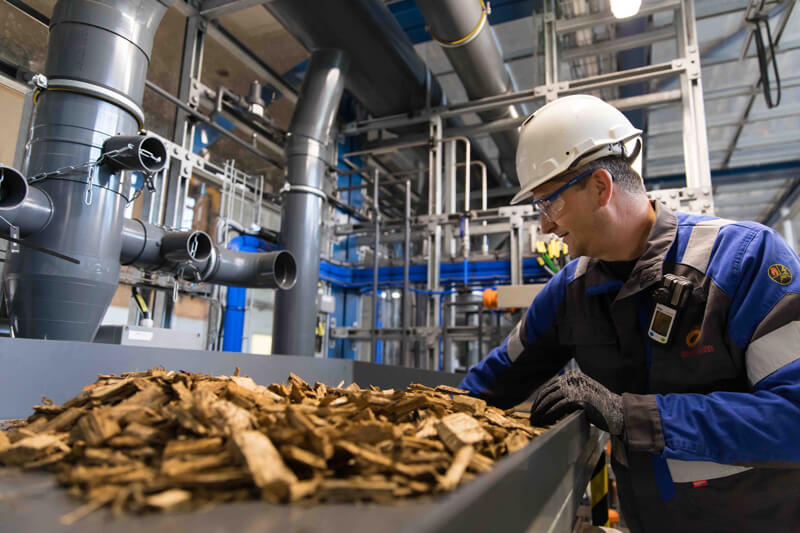
FDCA is one of many so called ‘platform molecules’: useful molecules sourced from nature that can be used to make multiple different products. In this case, FDCA has a wide potential and could also be used to make bio-based versions of other plastics types, including Nylon (Polyamides) and Polyurethanes (which are used for foams, glues, and more).
Currently, these production facilities are only at ‘demo’ stage, as in they are at a scale needed to successfully ‘demonstrate’ the technology works economically before moving to extremely large, industrial scale production. Avantium is a part of a multi-stakeholder consortium called PEFerence which aims to scale up the technology from its demo pilot facility of 5,000 tonnes per year to more than 200,000 tonnes per year – an ambitious goal.
What Are ‘Plant-Based’ Bottles and How Are They Made?
There are a couple of key applications for this new plastic. One key application is as a barrier or liner for packaging, which is where Carlsberg hopes to deploy it.
PEF as a Liner for a Cardboard Bottle
As part of Carlsberg’s “Together Towards Zero” initiative (which includes a commitment to reach zero carbon emissions), a cardboard alternative for beer bottles is being developed. The company attempting to commercialise this product is called Paboco, and was formed as a joint venture between Billerud Korsnäs and bottle manufacturing specialist ALPLA. Other brands, such as Absolut and Coca Cola, are involved, too.
The catch is – as could be expected – that cardboard becomes wet in contact with liquids and thus needs some kind of barrier or coating to stop it from doing so. As with cardboard coffee cups, a plastic based liner is one method of stopping the cardboard from becoming soggy.
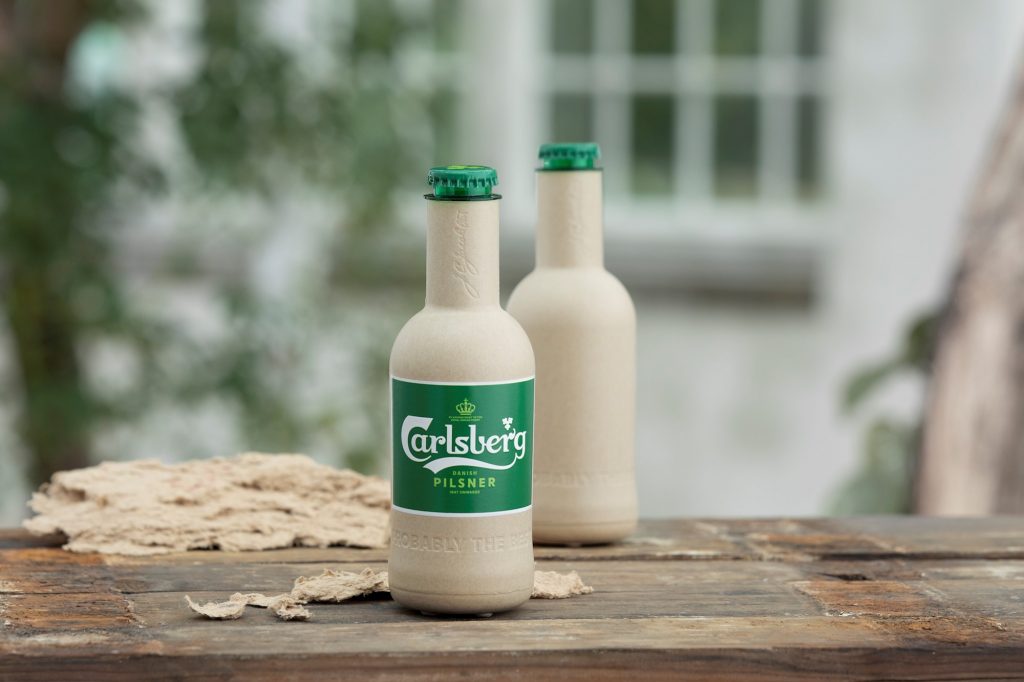
Two prototypes were initially introduced, one lined with conventional PET plastic, and one lined with bio-based PEF. In recent media reports, the PEF-lined bottle was highlighted and the maker of PEF, Avantium, announced it was joining the project. When compared to PET, the bio-based PEF alternative has even better barrier properties – meaning that it is more resistant to the diffusion of gases – good for keeping drinks fizzy and fresh for longer. So, by combining cardboard and a PEF plastic lining, you can arrive at a completely ‘plant-based’ bottle.
The key advantage of having a cardboard-based bottle lined with a PEF plastic lining is its much lighter weight and smaller volume than glass bottles, leading to a reduction in carbon emissions during shipping.
PEF as a Material for Single-Use Plastic Bottles
Another possible way in which the plastic PEF can contribute to creating ‘plant-based’ bottles is to use the material for single-use plastic bottles as opposed to the conventional (petroleum-based) PET. This possibility most likely attracted the interest of one of the project partners, Coca Cola. In fact, Coca Cola is so involved in the PEF project that it is an investor in its producer, Avantium.
Coca Cola has a track record of exploring ‘plant-based’ bottles in the past. In this example from 2015, 100% bio-based PET was used to create a prototype bottle. It’s possible to reach 100% bio-based content for PET by producing the other building block, TPA, from bio-based feedstocks. However, to date, this has not been commercialised to a point where it is widely available and its sustainability will highly depend on the type of feedstock used for its production.
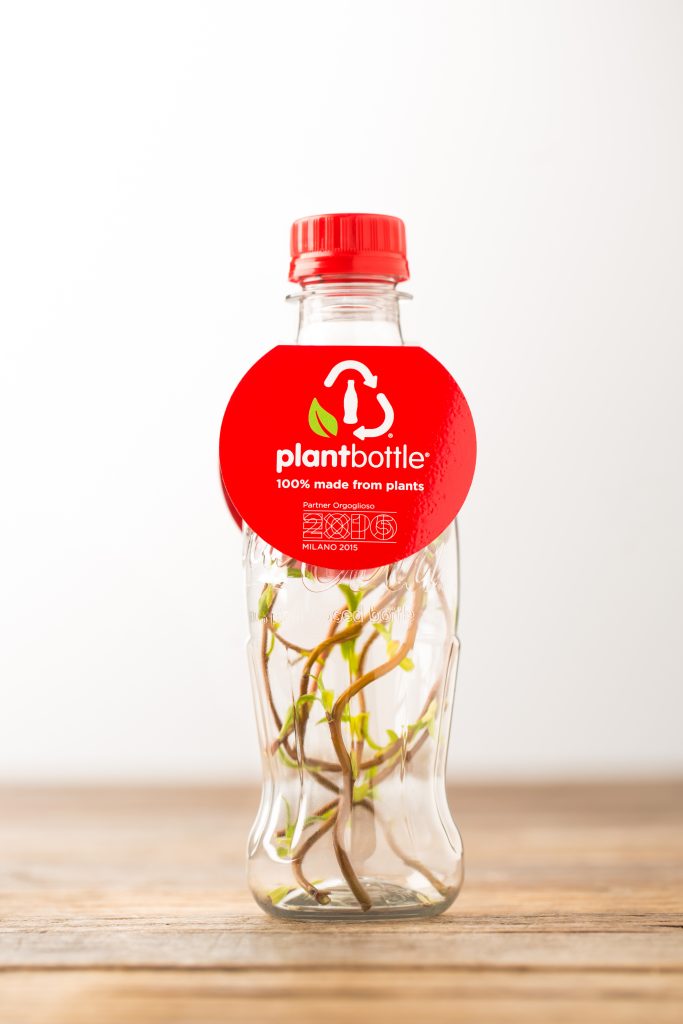
There are also other fully bio-based plastics such as polylactic acid (PLA) which are already widely used in certain kinds of packaging applications, including drinks bottles. However, for fizzy (carbonated) drinks, the gas barrier properties are too poor and the plastic too brittle to be useful for this application.
Is PEF a ‘Solution’ to Plastic?
Many of the media reports focused on PEF as a potential ‘solution’ to plastic. As we have already established, since PEF is a plastic itself it can’t be considered a plastic ‘alternative‘. But, if what is meant is “is it more sustainable than current plastics?” the answer could well be “yes”, depending on which lens you look at it through.
Carbon Footprint of PEF
One of the key things to consider for PEF is its favourable carbon footprint compared to PET. One academic LCA (Life Cycle Assessment) study found that in comparison to petroleum-based PET, PEF showed a 45-55% greenhouse gas reduction (from a corn starch feedstock), a bigger saving than for other bio-based plastics, such as PLA or bioPE. Tentatively, the study showed that switching to waste agricultural feedstocks such as straw could provide additional carbon savings in the future.
However, it is notable that this study compares PEF to fully petrochemical-based PET, and not partially bio-based or a fully bio-based PET. One study showed a fully bio-based PET bottle could have up to 20% fewer greenhouse gases than a petroleum-based PET bottle (if a wood based feedstock was used), meaning that PEF still appears to be the most favourable option.
However, carbon is only one part of the picture. Replacing the fossil feedstock with a biological one starts to have impact in other categories. The study on PEF did not explore these other categories, but when looking at other polyesters, such as PET, ecotoxicity and ozone depletion were cited as worse impact categories. It is clear that more information is needed to explore the other impacts of PEF in the full range of environmental impact categories. Water usage, eutrophication, acidification and land use changes are all potential impact hot-spots to consider for bioplastics.
Compostability of PEF
In articles surrounding this material, much was made of its ability to “completely degrade to nothing” or compost within a year. But, when we break this claim down, it is not as appealing as it first seems.
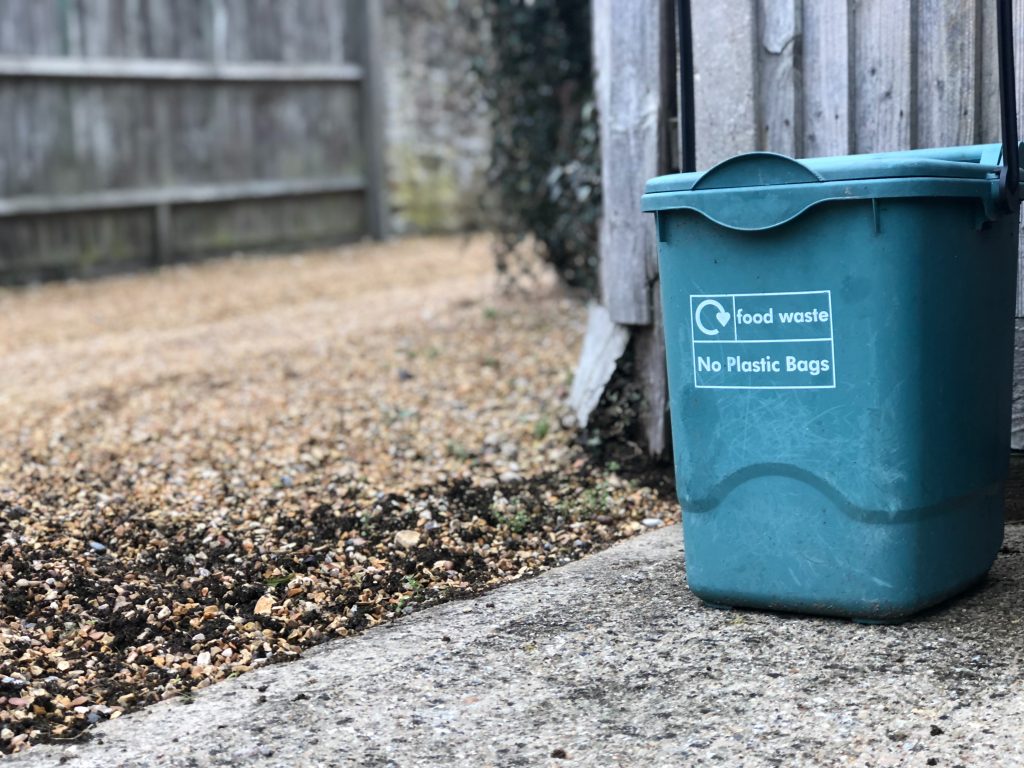
Compostable materials can be certified to conform to strict standards that prove they are compostable – that is, they disintegrate and biodegrade completely within a reasonable time frame. For example, the European ‘Seedling’ mark, based on the EN 13432 standard requires 90% disintegration of the material within 12 weeks and complete biodegradation in no longer than 6 months. So it is unlikely that PEF in its current form would ever be certified compostable. Why is this important?
Certification and strict testing requirements are needed to know which packaging is truly compostable under realistic conditions. Materials which are not certified as compostable may be difficult for composting facilities to accept, since they have no way of really knowing if the material will or will not degrade in their facilities, in a time frame that’s useful to them. Composters have different time frames for composting in different countries, but generally, 6 weeks on the lowest side (in Germany) and up to 12 weeks on the higher (in Italy) are acceptable. Some local authorities will also not accept packaging in organic waste bins without these certification logos.
There is no specific guarantee, like with other compostable materials, that the plastics will break down in the open environment or marine environments, so PEF should not be considered a solution to plastic contamination in the ecosystem.
Recyclability of PEF
For these reasons, the producer of the plastic itself prefers to focus on its recyclability, rather than its claims of biodegradability.
PEF is, like other plastics, able to be recycled by melting down the plastic, filtering it, and extruding it again to make new products. Avantium has shown the creation of recycled PEF fibre T-shirts in much the same way that current recycled polyester garments are made.
Due to the similar chemistry, methods of chemically depolymerising (breaking down to the molecular building blocks) the plastic could also be an option for its recovery in ‘virgin’ (like new) quality.
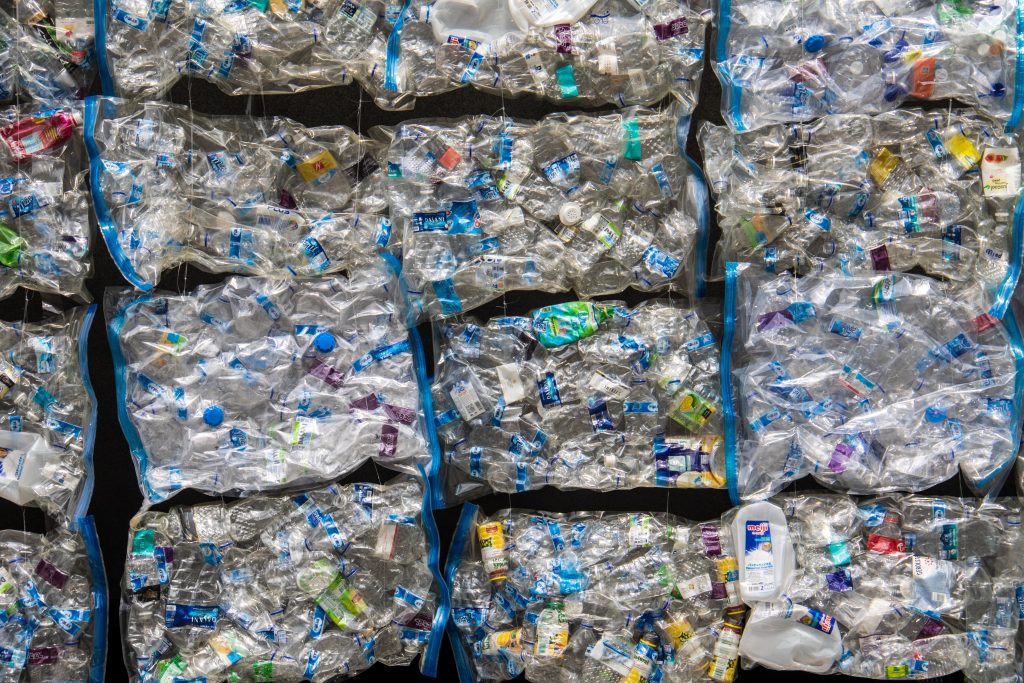
A big consideration, however, is that introducing yet another new plastic on the market is going to cause extra work for sorters of plastic in material recovery facilities (MRFs), as they now have a new plastic type to identify. It’s common that small amounts of contamination can be tolerated in other plastic streams. However, it has also been suggested that small amounts of PEF plastic contamination in the PET recycling streams would cause complications.
In any case, if the material is going to ‘actually’ get recycled, it needs to be automatically identified (for example, with infra-red cameras) and sent to a facility for recycling. There also needs to be a critical volume of material that it makes economic sense for a recycler to do this. A separate value chain for recycled PEF would need to be established, which requires some degree of investment, and ultimately, time.
To kick-start the process of recycling a new material, brand users of the new plastic may want to consider things like dedicated take-back schemes and partnerships with specific recycling facilities that can recycle the product, until recycling is more widely established in the market.
PEF and Hybrid Packaging Materials
As we have seen with the Carlsberg paper bottle project, another angle on its sustainability is as an ‘enabler’ of potential lower carbon packaging alternatives in combination with other materials. By utilising its unique barrier properties in combination with its lower-carbon potential, it enables paper to be the main basis of a beer bottle by weight – in a market currently dominated by glass. Since the weight of a product is a large factor in its overall carbon footprint (in terms of the amount of material used, but also its impact on transportation emissions), there is a potential to have a lower-carbon beverage container system.
However, this shouldn’t come at the expense of its use and disposal at the end of life. In much the same way as disposable paper-based coffee cups, there is very little recycling capacity at present for plastic-lined paper packaging, although it is increasing. According to one report, the PEF plastic lining is intended to be separable from the cardboard component, which should enable recycling of the cardboard component – providing that customers do this.
Conclusion
Overall, PEF is an interesting, fully bio-based alternative to PET with some very attractive properties for packaging applications. However, based on current evidence it should not be classed as compostable, or thought of as a solution to marine or environmental litter, as it behaves like most other common plastics. The real key benefit of this material is in its potential for a reduction in carbon emissions when compared to petroleum-based PET. There are also many potentially interesting applications of the material for new innovations in sustainable packaging, such as the cardboard-based drinks bottle.
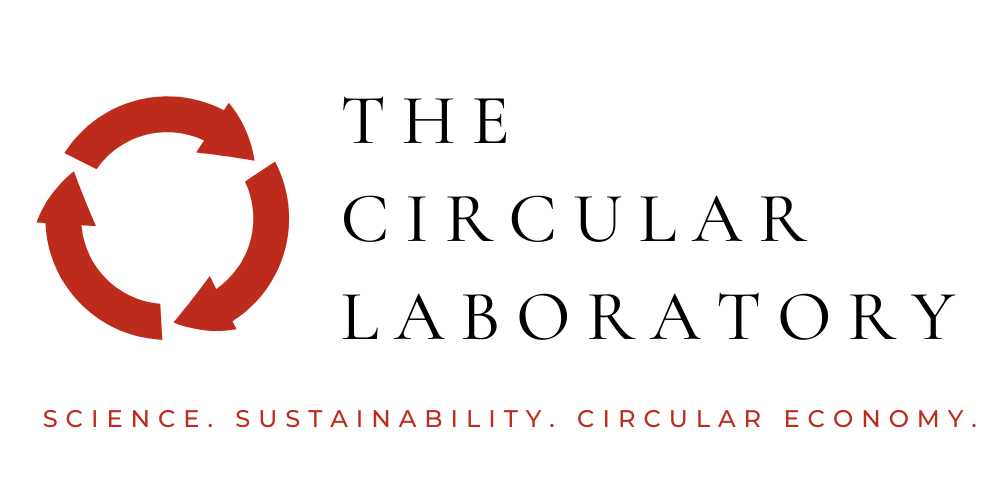
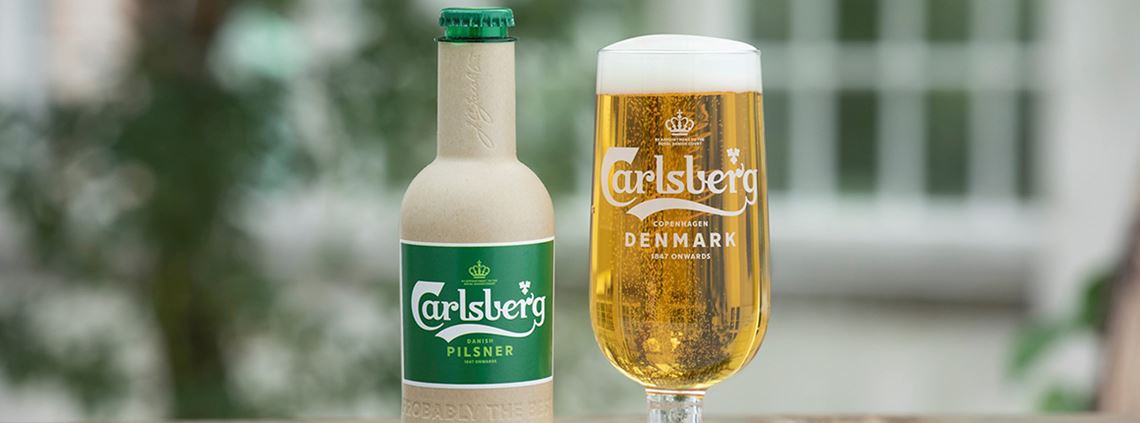
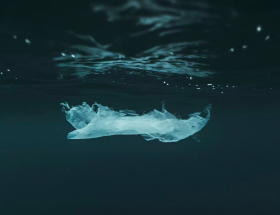
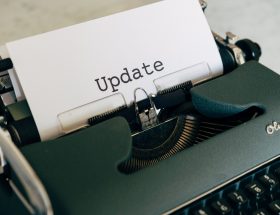
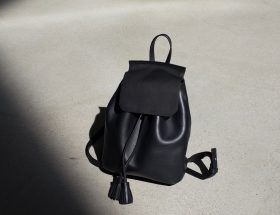
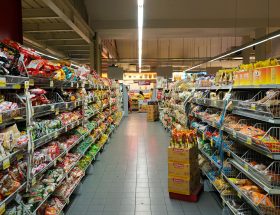
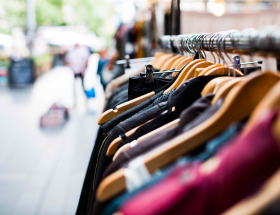
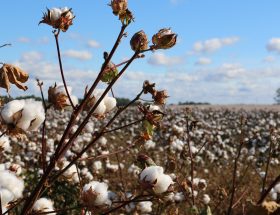
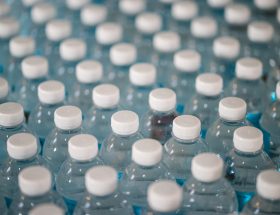
[…] called a polyester. The difference is that it is made entirely from bio-based feedstocks (sugars). Avantium states that the sugar is currently sourced from sugar beet, sugar cane, wheat and corn as well as non-food […]